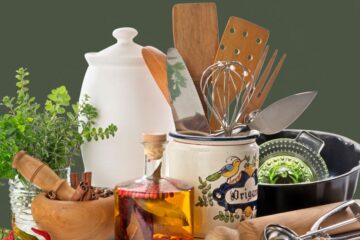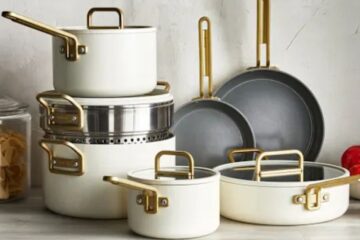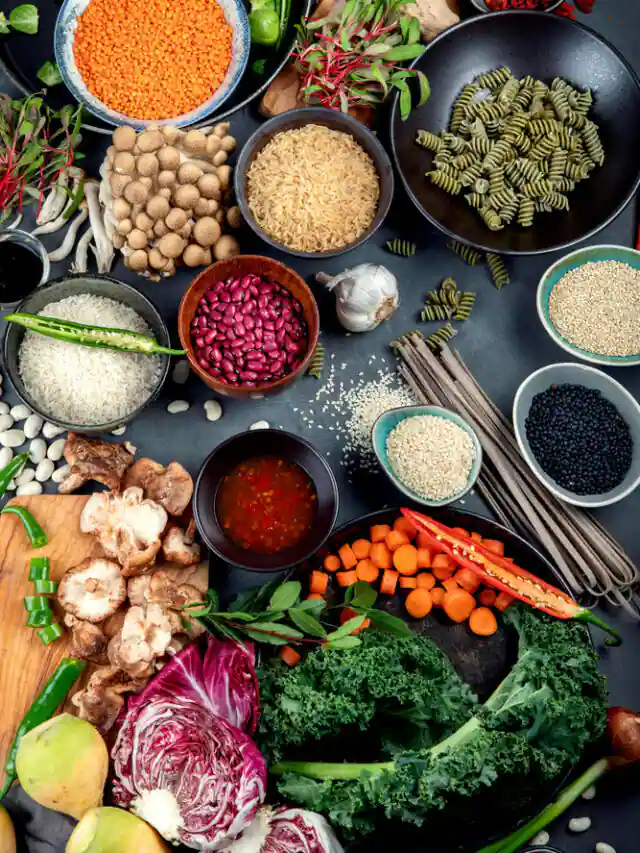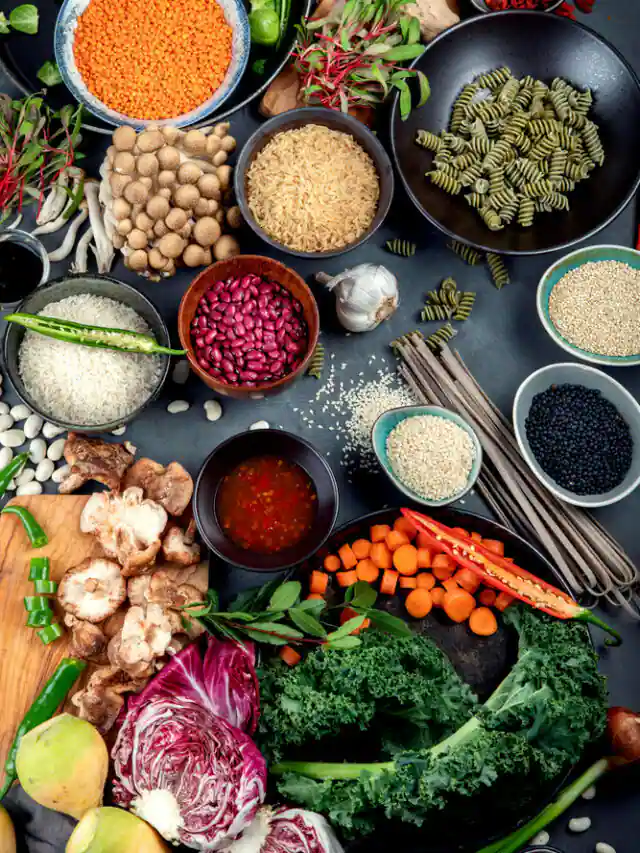Mana Vantillu’s Philosophy: Where Tradition Meets Modern Wellness
Namaste, and welcome back to Mana Vantillu-Our Kitchen. I wear many hats here: I’m a Mother preparing nutritious meals, a Chef constantly seeking perfection in technique, a Nutritionist prioritizing health, and a Life Coach advocating for mindful living, even in the kitchen.
For any Indian household, the roti is the staple, the foundational pillar of every meal. A perfectly cooked roti-soft, evenly puffed, and lightly browned-is a simple pleasure, yet it often requires battling with sticky surfaces, excess oil, and uneven heat.
This struggle ends today.
As an Expert in material quality of utensils, I’ve witnessed the revolution of the cooking surface. We are moving away from the old, heavy reliance on oil to prevent sticking. Instead, we embrace the superior engineering of a high-quality non-stick tawa. This change isn’t just about convenience; it’s a commitment to a healthier lifestyle-a theme I emphasize in my Yoga Trainer sessions. Minimal oil means minimal saturated fats, and less scrubbing means less stress. It’s a win-win for our bodies and our peace of mind.
This comprehensive guide is designed not just to list products, but to empower you with the knowledge to select a long-lasting, safe, and truly effective tawa. We will focus only on the latest, safest technology that is PFOA-free (Perfluorooctanoic acid-free), ensuring your kitchen is a haven of wellness.
The Doctor’s Diagnosis: Understanding Non-Stick Safety
Before you invest, you must understand the material. As a Doctor and Nutritionist, my top priority is ensuring that the surface in contact with your food is inert and stable. The old content you might find online often flags warnings about chemicals like PFOA, which were used decades ago. The industry standard has changed significantly.
The Materials We Trust
When we talk about modern non-stick, we are typically referring to PFOA-free coatings, which are safe for daily cooking up to moderate temperatures (below $260^\circ\text{C}$).
1. PTFE (The PFOA-Free Evolution):
This is the classic non-stick material. The crucial point here is that it must be certified PFOA-free. High-quality brands now use 3-layer, 4-layer, or even 5-layer coatings, which significantly boost durability and scratch resistance compared to the flimsy single-layer coatings of the past. PTFE is excellent for rotis because it allows for a beautiful, oil-free release every single time.
2. Granite Coating (Robust and Reliable):
This is essentially a high-end, multi-layered PTFE system infused with mineral particles to mimic the look and texture of granite. This structure makes the tawa surface much tougher, leading to better scratch resistance and longer life. If you are a high-volume cook, this coating provides the best balance of slickness and resilience.
3. Hard-Anodized Aluminium (The Perfect Foundation):
This isn’t a top coating, but the essential base material. Aluminum is transformed through an electrochemical process into a dense, hard, non-porous surface. This base is superior because it’s non-reactive, highly durable, corrosion-resistant, and prevents any raw aluminum from leaching into food, even if the top non-stick layer eventually wears thin. It’s the superior choice for a foundation.
4. Ceramic Coating (The Health Purist’s Choice):
Made from mineral-based materials, these coatings are naturally PTFE- and PFOA-free. They are highly stable at high temperatures, making them a favorite among health purists who want to avoid any potential chemical concerns whatsoever. However, the non-stick property of ceramic can sometimes degrade faster than high-end PTFE if not meticulously maintained.
The Chef’s Essential Checklist: Beyond the Coating
A tawa is more than its non-stick layer. As a seasoned Chef and Money Management Person, I look for features that promise consistent results and longevity-ensuring your investment pays off.
A. The Critical Factor: Thickness and Gauge
The thickness of the base is the single most important indicator of a tawa’s quality.
- Avoid Thin Bases: Cheap, thin tawas ($2.0 \text{ mm}$ or less) will inevitably warp, causing oil to pool and leading to severe ‘hot spots’ that burn the center of your roti while leaving the edges raw.
- Target the Sweet Spot: Look for a thickness between $3.5 \text{ mm}$ and $5.0 \text{ mm}$. This heavy gauge ensures heat is absorbed and distributed evenly across the entire surface. This even heat is the secret to a perfectly puffed, uniformly cooked roti.
B. Size and Shape for Versatility
- Diameter: For versatility-rotis, dosas, pancakes, and omelets-a 28 cm (11-inch) diameter is the most practical choice for a family kitchen. It provides ample space without being too cumbersome.
- Concave vs. Flat: The modern non-stick tawa is almost always flat, which is ideal for rotis that are then finished on an open flame. If you primarily make larger dosas or uttapams, the flat surface is mandatory. The slight concave shape is becoming rare in non-stick models.
C. Stovetop Flexibility (The Future-Proof Feature)
If you have an induction hob, or plan to get one, always select an Omni Tawa. This means it has a magnetic stainless steel plate embedded in the base, making it compatible with both induction and traditional gas stoves. This is a smart Money Management move, making your utensil future-proof.
The Life Style Blogger’s Curated List: 16 Tawas That Shine
Based on extensive research into material quality, user feedback, and safety certifications, here are the 16 best non-stick tawas that promise to deliver flawless rotis and phulkas, day in and day out.
I. The Apex of Quality (Investment Grade)
These tawas use superior base materials and multi-layer, durable non-stick coatings, justifying a higher price point with outstanding longevity.
- Hawkins Futura Non-stick Tawa: Built on a tough, hard-anodized base, known for its superb heat retention and warp-free construction. The German non-stick coating is rugged and designed for daily, demanding use, perfect for making rotis for a large family.
- Wonderchef Granite Tawa: Famous for its heavy gauge and 5-layer PFOA-free granite-finish coating. The multi-layer system provides exceptional scratch resistance, allowing it to maintain its slickness over years of use-a true Foodie favourite.
- Prestige Omega Deluxe Granite Tawa: A staple in Indian kitchens. The Deluxe line ensures a thicker base and a reliable, induction-friendly, granite-finish coating, offering high performance and ease of maintenance.
- Vinod Legacy Tawa (Hard-Anodized with Non-stick): Vinod offers excellent weight and thickness, crucial for perfect heat distribution. This is a robust choice that provides the durability of hard anodizing with the convenience of a slick non-stick layer.
II. Best-in-Value Performers (The Everyday Heroes)
These tawas offer a fantastic balance between quality construction and competitive pricing.
- Cello Non-Stick Flat Tawa (Granito Series): Cello’s Granito line provides the durability of a multi-layer coating and often features a thick, heat-retaining base, making it a reliable workhorse for everyday roti-making.
- Borosil Granito Nonstick Tawa: Known for its thick aluminum construction and 5-layer granite coating. Borosil generally ensures PFOA-free certification and provides excellent customer support, adding peace of mind to your purchase.
- Milton ProCook Granito Non-Stick Tawa: Often an Omni Tawa with induction compatibility and a heavy-gauge build. The cool-touch Bakelite handle is a safety feature that every Mother appreciates, preventing accidental burns.
- Pigeon Special Non-Stick Flat Tawa (Heavy Gauge): A widely trusted, budget-friendly option. When selecting, always choose their ‘Special’ or ‘Heavy Gauge’ versions for better longevity and even heat spread.
- Tefal Delicia/Powerglide Tawa: Tefal’s patented non-stick technology is globally renowned. Their models often feature a unique Thermo-Spot indicator that turns solid red when the tawa is perfectly preheated, eliminating guesswork for the perfect roti.
- Bergner Bellini Plus Tawa: A modern European design that often incorporates a higher-grade, multi-layer coating and superior induction compatibility. An aesthetic and high-performing addition to any modern kitchen.
III. The Health-Conscious & Ceramic Alternatives
For those prioritizing the removal of all forms of PTFE/PFOA from their cookware.
- Caraway Nonstick Ceramic Tawa: A premium brand focused exclusively on mineral-based, non-toxic ceramic coatings. It’s PTFE/PFOA/PFAS-free and often lauded for its robust, clean cooking experience, aligning perfectly with a Life Style Blogger’s clean-living ethos.
- The Ember Cookware Ceramic Tawa: Provides a high-performance ceramic alternative that is non-toxic and designed to withstand the higher heat often used in Indian cooking, while still providing a non-stick surface.
- GreenPan Tawa (Thermolon Coating): A global leader in ceramic non-stick. Their Thermolon coating is extremely heat-resistant and guaranteed PFOA-free, providing a completely safe cooking surface.
IV. Reliable & Affordable Choices
Dependable options for those seeking good non-stick performance without the high-end price tag.
- Amazon Solimo Non-Stick Flat Tawa: The in-house brand offers solid basic features: PFOA-free coating and adequate thickness for smooth daily roti-making, proving that quality doesn’t always demand a high cost.
- Nirlon Non-Stick Flat Tawa: A popular, cost-effective choice. It provides decent non-stick performance and is a great option for light or occasional use, focusing on minimal oil cooking and easy cleaning.
- Butterfly Non-Stick Omni Tawa: Known for its reliable performance and broad availability. Their Omni Tawa variant is excellent for flexibility between gas and induction cooking, providing great Money Management value.
The Yoga of Maintenance: A Recipe for Longevity
As your Yoga Trainer, I teach that discipline and care lead to strength and resilience. The same applies to your tawa. Treat it right, and it will serve you for years.
Rule 1: The Heat Control Pranayama (Breathing): Never, ever put a non-stick tawa on maximum heat, empty, and walk away. High, prolonged dry heat is the only thing that breaks down the non-stick coating. Cook rotis on a low to medium flame. The even heat of a thick tawa will do the job perfectly without scorching the surface.
Rule 2: The Soft Touch Ahimsa (Non-Violence): Use only wooden, silicone, or heat-resistant plastic spatulas. Abrasive materials-even seemingly small scratches-are the beginning of the end for any non-stick surface.
Rule 3: The Gentle Saucha (Cleaning): Hand-wash your tawa with warm, soapy water and a soft sponge or cloth. Avoid dishwashers-the harsh chemicals and high heat are guaranteed to shorten the tawa’s lifespan drastically.
Rule 4: The Cool Down Dharma (Duty): Never shock a hot tawa with cold water. Allow it to cool down completely on the stovetop. This prevents warping of the metal base and preserves the integrity of the non-stick bond.
The Content Writer’s Final Word: Your Kitchen, Elevated
The true beauty of a great meal is in its preparation. By selecting one of these 16 expert-vetted non-stick tawas, you are choosing safety, efficiency, and a touch of professional quality for your home. You’ll be able to create those perfectly soft, oil-free rotis that everyone raves about, transforming a daily chore into a daily joy.
Embrace this smart kitchen upgrade. It’s an investment in your health, your time, and the delicious harmony of Mana Vantillu.










